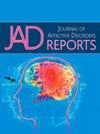Ketamine treatment for depression in elderly inpatients: an observational case series
Q3 Psychology
引用次数: 0
Abstract
Introduction
Treatment-resistant depression (TRD) in elderly patients is a challenging issue, with limited options beyond electroconvulsive therapy (ECT). Intravenous ketamine has emerged as a potential alternative, but its efficacy in older patients is not well-studied. This study evaluates the tolerability and efficacy of intravenous ketamine in 10 consecutively treated elderly patients mostly with TRD in an inpatient geriatric psychiatry setting.
Methods
Ten elderly patients (aged 61–77) mostly with TRD were treated with six bi-weekly intravenous ketamine infusions (0.5–1.0 mg/kg) as an add-on treatment in an open-label trial. Depression severity was assessed using the Montgomery-Åsberg Depression Rating Scale (MADRS) at baseline, after two treatments, and after six treatments. Clinically significant improvement (≥25 % improvement), response (≥50 % improvement), and remission (MADRS < 10) rates were calculated. Tolerability was monitored throughout.
Results
After six treatments, 7 out of 10 patients showed clinically significant improvement, with 5 meeting response criteria, and 2 achieving remission. The mean MADRS score reduction was 14.2 (SD = 9.62) for the entire sample. Those with ≥25 % improvement exhibited a rapid decrease in symptoms, with a mean MADRS score reduction of 14.14 (SD = 6.74) already after the second infusion. Only 2 of the 7 patients showed sustained benefit four weeks after treatment. The treatment was well-tolerated with no serious adverse events.
Conclusion
Intravenous ketamine rapidly reduced depressive symptoms in most patients, but the majority did not maintain the response at four-week follow-up. Further research is needed to develop strategies for maintaining the effects and to study larger samples.
氯胺酮治疗老年住院患者抑郁症:观察性病例系列
老年患者的难治性抑郁症(TRD)是一个具有挑战性的问题,除了电休克治疗(ECT)之外,选择有限。静脉注射氯胺酮已成为一种潜在的替代方法,但其对老年患者的疗效尚未得到充分研究。本研究评估了住院老年精神科10例连续治疗的以TRD为主的老年患者静脉注射氯胺酮的耐受性和疗效。方法10例老年TRD患者(61 ~ 77岁),在开放标签试验的基础上,每两周静脉输注氯胺酮(0.5 ~ 1.0 mg/kg) 6次。在基线、两次治疗后和六次治疗后,使用Montgomery-Åsberg抑郁评定量表(MADRS)评估抑郁严重程度。临床显著改善(≥25%改善)、缓解(≥50%改善)和缓解(MADRS <;10)计算费率。对耐受性进行了全程监测。结果经6次治疗,10例患者中有7例出现临床显著改善,5例达到缓解标准,2例达到缓解。整个样本的平均MADRS评分降低14.2 (SD = 9.62)。改善≥25%的患者症状迅速减轻,第二次输注后平均MADRS评分降低14.14 (SD = 6.74)。7名患者中只有2名在治疗后4周持续受益。治疗耐受性良好,无严重不良事件。结论静脉注射氯胺酮可迅速减轻大多数患者的抑郁症状,但大多数患者在4周随访时未能维持缓解。需要进一步的研究来制定维持效果和研究更大样本的策略。
本文章由计算机程序翻译,如有差异,请以英文原文为准。
求助全文
约1分钟内获得全文
求助全文
来源期刊

Journal of Affective Disorders Reports
Psychology-Clinical Psychology
CiteScore
3.80
自引率
0.00%
发文量
137
审稿时长
134 days
 求助内容:
求助内容: 应助结果提醒方式:
应助结果提醒方式:


